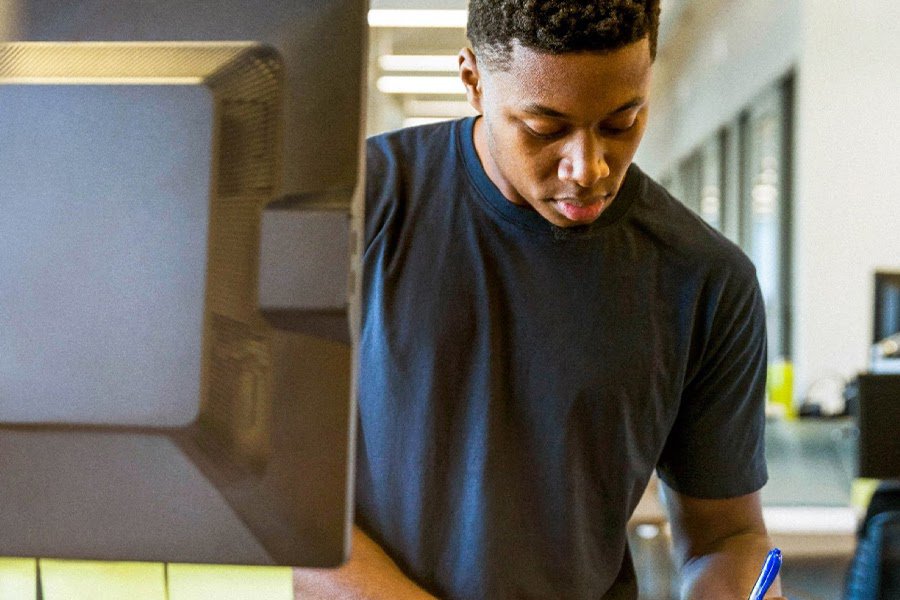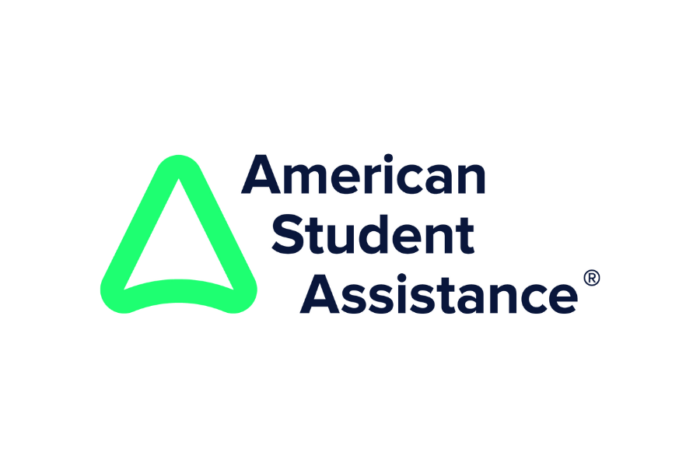-
2.0Advisory Systems and the Five Core Elements
Advisory systems are a way for students to build relationships with adults and peers, reflect on their learning, and set goals for the future. They also help students explore career options and plan for postsecondary education.
-
2.1Progress Planning and Reporting
Strong secondary schools use advisory systems to reflect on social and academic growth, set short and long-term goals, and help learners tell their stories.
-
2.2Supports
Advisory systems are the front line of monitoring the need for student support. They are often part of the foundation of a multi-tiered system of supports (MTSS) to ensure that all students’ needs are met through increasingly targeted interventions across three levels of support.
-
2.3Career Exploration
Advisory systems are often the focal point for career exploration and job awareness.
-
2.4Postsecondary Planning
This process helps students develop and implement a plan for learning after high school based on interests, skills, values and goals.
-
2.5Pathway Authoring
Advisors play an important role in helping learners select pathways and courses. In some cases, they can facilitate choice in learning experiences including co-authoring a project, shaping work-based learning, or initiating entrepreneurial activity.
-
3.0Other Support & Guidance Functions
In addition to the core functions, there are five other dimensions of support and guidance related and often incorporated into advisory systems: positive culture, skill building, coordinating work-based learning, building social capital and promoting wellness.
-
3.1Positive Culture
A positive school culture is one where all students feel safe, respected, and valued. It is a culture where students are motivated to learn and grow, and where they feel supported by their teachers and peers.
-
3.2Skill Building
Advisory systems often include self-management and relational skill building and may include or coordinate supplemental development of other priority skills such as financial literacy, digital citizenship, study skills and project management.
-
3.3Coordinating Work-based Learning
Advisors often help learners identify work-based learning opportunities including job shadows, client projects, and internships.
-
3.4Building Social Capital
Schools can play a pivotal role in leveling the social capital playing field.
-
3.5Promoting Wellness
Both qualitative and quantitative data from the last few years have made it abundantly clear that wellness plays a huge role in social and academic growth.
-
4.0Support & Guidance Technology
The tech industry has developed an array of solutions aimed at supporting guidance counselors, educators, academic advisors and other key roles involved in students’ educational journeys.
-
4.1Artificial Intelligence
AI and machine learning are quickly being incorporated into advisory systems that support learners and has the potential to extend access to personalized learning experiences, localized guidance and efficient supports.


Authors & Gratitude
This paper was authored by the Getting Smart team and features numerous friends and partners in the field. Much of the video content has been taken from our ongoing Getting Smart Town Halls, podcasts and more. It is also a part of our New Pathways campaign.
The production of this publication was made possible with generous support by American Student Assistance (ASA).
Introduction
Press play for an audio overview of Support & Guidance
Secondary students, Generation Alpha, are coming of age at an inflection point – a revolution of human-computer interaction. Reid Hoffman refers to them as Generation AI and suggests AI should not be an abbreviation for artificial intelligence, but for amplification intelligence. This shift is due to its power to augment and elevate humankind. Hoffman continues, “It will become the primary technology that we use to make decisions and navigate life. A steam engine of the mind, a cognitive GPS, a tool for orientation, discovery and navigation.”
This is just one emergent challenge in a cast of many combining to make secondary education more challenging than ever before. Generation Alpha is the same group of teens who lived through a global pandemic facing the traditional demands of school while learning remotely. They are the same generation who has inherited an uncertain and inequitable economy, polarized politics and the climate crisis. Daily, they struggle with the addictive influence of social media and are skeptical of both the feasibility of cost and the long-term value of college.
Despite the challenges, the opportunities for middle and high school learners have never been greater both in and out of school. Generation AI has access to smart tools to analyze, create, publish and activate change. New technologies and priorities have enabled many of them to access new pathways to employment and entrepreneurship. Guidance systems that help learners chart a path forward have never been more important.
What is support and guidance?
Support and guidance systems in schools combine the specialized work of counselors, specialists and social workers with advisory systems that engage teachers in sustained relationships with small groups of students. Strong support and guidance systems are augmented by community partners that extend youth and family services. Each of these functions increasingly relies on computer applications to deliver personalized support and advice.
When done well, these systems expand the view of possible futures and empower informed postsecondary plans. Comprehensive advisory systems produce student agency, belonging, purpose, and well-being. They enact school culture, illustrate what is valued, and create enabling conditions for academic success. That being said, the systems are often incredibly challenging to implement well and consistently. Within the structure of advisory are a multiplicity of goals and most of them are not credit-bearing.
Regardless of the challenge, we believe support and guidance systems are the cornerstones of a positive secondary school experience—one that lays the foundation for a lifetime of expression and contribution. These systems have the potential to result in the following benefits:
Increased readiness. Consistent implementation of advisory programs has been shown to positively impact metrics such as course taking patterns, transcript readiness, and college enrollment. For example, schools that were part of a six-year college readiness initiative that emphasized advisory showed significant growth in college readiness.
Connection to peers. A strong advisory program helps students get connected to one another in meaningful ways. Through class discussions, democratic classroom decision-making, Socratic seminars and other activities, students form bonds with one another and also learn more about themselves in relation to others.
Connection to adults. A strong advisory system provides sustained adult mentorship relationships. Research suggests that strong adult mentorship while in high school increases the likelihood of graduation and postsecondary success.
Advocacy. A strong advisor-advisee relationship means that the student has an advocate in the building. As a result, students feel supported, and if (or when) they face personal or academic difficulty, rather than mentally or physically “disengaging,” the student has someone to approach for help, feedback and assistance.
Personal Growth. Because of the student’s personal connections to an adult, the student can learn more about their academic and personal strengths and areas for improvement. A student’s own self-awareness is critical for success in college and beyond, and a good advisory program can help students become more self-aware through 1:1 discussions with their advisor and discussions as a peer group during advisory time.
Why now?
As mentioned above, Generation AI has faced an array of challenges. These include, but are not limited to, the effects of an enduring global pandemic, climate crises, urgent social movements, increased incidents of discrimination and violence, major domestic political shifts, widening economic inequality and the rise of artificial intelligence. They’re growing up in an era of 24/7 online access to information, including increasingly influential social media platforms and trends that have been shown to fuel social comparison and lower self-esteem. The collective trauma has taken a toll leading to what the Surgeon General called a mental health crisis. Tools are emerging and getting rapidly adopted by districts to help families better respond to these growing challenges.
Many struggle to build diverse networks and social capital, citing that they are least confident in these areas. This is especially true for first-generation students, who are less likely to participate in social capital-building activities. Those who enter undecided or choose to change a major (more than 8 in 10 students according to some reports) typically add time and tuition to their pursuit of a credential. Yet the majority of Americans are no longer convinced of the value of a four-year degree, citing high debt and a lack of core competencies necessary for the job market.
Relevant social skills and robust mental health supports are part of a broader equation that includes a holistic approach to students’ needs and interests. School leaders and educators are struggling to excite young people about learning. Students in grades 5-12 gave their schools a B- in this category according to a recent nationwide survey. Despite the clear importance, students are least positive about how well their school fosters excitement about learning, serves different learning styles, teaches about potential careers and provides mental health support.
The opportunities of this new age of human-computer interaction come with new learning priorities. Support and guidance professionals can play an important role in helping school communities embrace the importance of learner agency, self-direction, and entrepreneurial mindset. The nonroutine cognitive work is what Lumina Foundation CEO Jamie Merisotis called Human Work in the Age of Smart Machines: thinking critically, reasoning ethically, interacting interpersonally, and serving others with empathy–these problem-finding, problem-solving, integrative skills are things only humans can do.
Support and guidance are core elements of learning in this new age, creating the conditions for wellness and growth and empowering learners to co-create pathways to success.
Definitions
Guidance Counselor
A professional who supports students in their academic and professional pursuits by offering advice and insights tailored to a student’s personal interests and needs.
Support
An umbrella term that could comprise a holistic approach to improving student well-being and enabling success through academic, career, social/emotional, and/or trauma-informed efforts.
Advisor
An academic support professional who identifies student needs, communicates with relevant adults (parents, teachers, etc.) and enables growth and exploration via regular guidance sessions, often offered in a 1:1 setting.
Wayfinding
A navigation process through which K-12 students acquire critical skills, build robust peer and adult relationships, and explore academic interests.
Career Counselor
A professional who prepares students for college and career by creating awareness of various roles/industries, and designing experiences that connect students with postsecondary education and the world of work.
Social Capital
The measure of our connections with others; the amount of emotional and practical support, of trust and help, that emerges from caring relationships.


